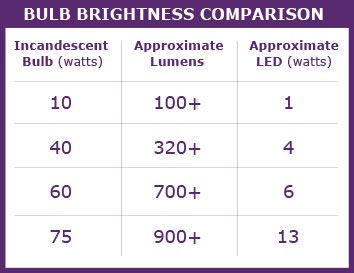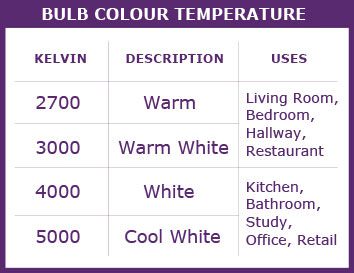Well it’s now all about the Lumens, not Watts. Previously you chose your bulb brightness by the level of Watts i.e a 40, 60 or 100 watt bulb.
But, wattage is not actually the measure of a bulb’s brightness, but is its energy usage. There is then, a direct correlation between watts and the bulb’s brightness in incandescent bulbs but not with an ultra low consumption of a 4 Watt LED bulb.
LEDs (Light Emitting Diodes) work differently and so is the way we measure the brightness. As LEDs use far less energy, the amount of watts used is no longer an indicator as to the brightness of the bulb.
Also there is no exact conversion from Watts to LEDs; a traditional 60 watt incandescent bulb can compare to anywhere between 2 and 12 watts in a LED bulb, but don’t panic, it’s just a case of knowing your required Lumen rating. Lumens are the ‘brightness’ measurement provided by a light bulb, and this is what you need to look for when choosing your new LED.
Our comparison guide is an approximation of Watts to Lumens for our bulbs only. An old 40 watt bulb would on average be between 300 to 500 Lumens.
So, now we know where previously we looked at a 40 watt incandescent bulb we may now choose perhaps a 4 watt LED, we may also want to choose our bulb based on the colour emitted. This is referred to as ‘colour temperature’ and is measured in Kelvins – with the higher the number, the whiter and cooler the light given off i.e. anything under 4000K tends to produce a warmer, more gentle light and anything over that produces a cooler brighter white light, mostly used for task areas such as kitchens and work areas.
The average of an old style incandescent was between 2,700 and 3,500 Kelvin. So if colour rendering is your deciding factor then choose your LED bulb by its Kelvin rating.



Leave A Comment